We keep what we think is going to be the absolute highlight for last. There are some 386 moidans – burial mounds – in 137 locations in what used to be the Ahom kingdom along the Brahmaputra river in Assam. The most important of those, of the Ahom royals – recently recognised as a UNESCO World Heritage site – are located in Charaideo, the first Ahom capital, some 30 kms from Sibsagar. Although the capital changed places over the 600 year rule, the royal burial ground always remained here, where every next generation was put to rest.
At the previous sites we had already noticed the system of online tickets only. You scan a QR code and pay online, then wait for your digital ticket to arrive and show it to the guard at the entrance. A rather cumbersome process, that, of course, first of all requires an Indian telephone number – luckily, we do have a local SIM card, but it is somehow easier to use our driver, and pay him back in cash. In front of the gate a crowd of people is pushing towards the QR code stickers, and then spend the next few minutes filling in all the required fields, before they manage to pay and receive their online ticket on their phones, which then needs to be shown to the guard at the entrance. Mind you, and that all for 20 Rupies, about 25 cents, per person. Except in our case, of course.
But at Charaideo, the most important, UNESCO-recognised site, somehow it is necessary to scan the QR code, and then hand over your phone to a lady in a ticket boot, who copies the information on her own phone, or provides info from hers onto our driver’s, I don’t know – and does need to see our passports, in the process. In the end the phone passes backwards and forwards three or four times, it takes a good ten minutes, but then we have our ticket. Well, on our driver’s phone, but we have them. And we are not the only ones struggling, all the local tourist go through the same, ten minute process passing phones backwards and forwards. For 20 Rupies each (and we for a double digit multiple of that, of course).
The Park
Only to be let into a park, with brick walking paths, that go past some green, grass-covered hills. A few bigger ones, and many small humps. These are the moidans. One or two have the remains of a small stone structure on top, some also have a low, octagonal wall around them, clearly restored. But for the rest, there is really nothing to see. Or it must be the posters that explain that these hills – moidans – have a burial chamber inside, a now hidden access corridor, and indeed, sometimes a stone structure on top.
Back at the gate, we notice that there is a second part to the grounds, separately fenced in. For which we need to buy a separate ticket. Oh no, not again! But here we pay 5 Rupies only, in cash, get a paper ticket, and are allowed in. Into a similar type of park, less well laid out perhaps, but with another collection of hills that represent moidans. And as extra bonus a mock-moidan, where we can walk in a reconstructed burial chamber through a reconstructed entrance corridor. Not very exciting, all, but at least we have now seen the posters in practice.
The verdict? Not really worth the effort. And definitely not worth the hassle.
The Bridge
The good news is that on the way back we stop at the Dikhowe bridge, in Sibsagar. Built in 1935 by the British, one website calls it an ‘engineering marvel’, as it has a section in the middle that could be lifted to let ships pass. Not anymore, the bridge does no longer function – I don’t dare crossing it all the way, as there are big holes in the middle -, and a new, concrete and immovable one has been built next to it. But the original bridge, metal construction, is still worth a visit. An engineering marvel. And without an online ticket requirement.
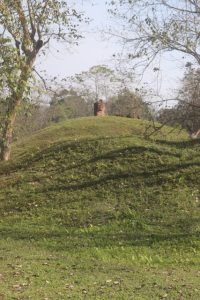
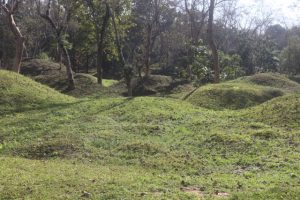
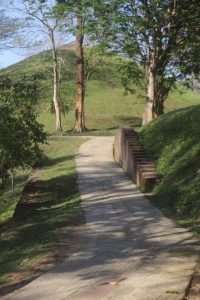
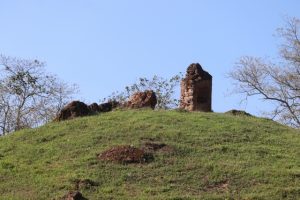
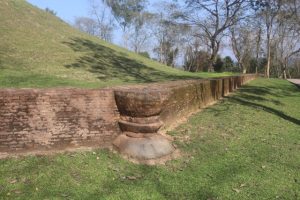
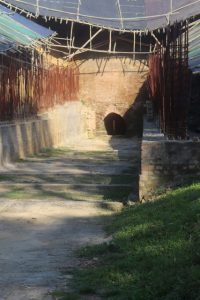
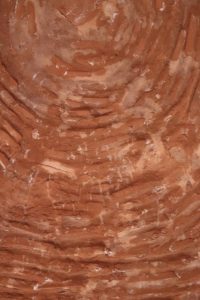
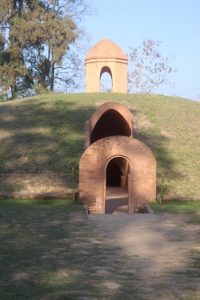
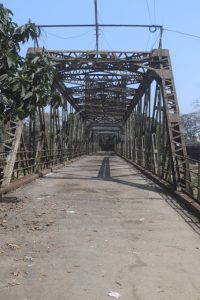


 RSS – Posts
RSS – Posts








This is such an underrated but wonderful place. Totally worth the extra time and effort it takes tto reach.
Hmmm, I actually argue the opposite, Rajiv, thought it was rather underwhelming. And not just the logistics.